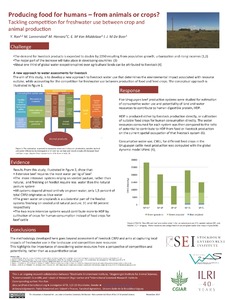Location
A leading European university in one of the world’s most dynamic capitals
Stockholm University in the capital of Sweden is characterised by its openness, innovation and collaboration.
Stockholm University was founded in 1878 with the ambition to reinvent higher education in Sweden. From the beginning, close contact with the wider world as well as the active exchange of knowledge and experience have been integral to this vision.
With a global perspective and through partnerships with others, Stockholm University contributes to the development of knowledge. Education and research within human science and science in the international frontline, as well as interdisciplinary work, make this possible.
We make knowledge accessible to everyone through dialogue and participation in public debate and the development of society.
Members:
Resources
Displaying 1 - 4 of 4Bringing together social-ecological system and territoire concepts to explore nature-society dynamics
We examine two academic traditions that address the nature-society interface. These traditions are organized around two main concepts: social-ecological system and territoire. These traditions have grown independently and are rooted respectively in ecology and social geography. We show that they have much in common: Both come with a systemic view of the nature-society interface and have the intention of understanding better the relations between nature and society and improving their sustainability. However, they differ in how they deal with space and society.
A diagnostic procedure for applying the social-ecological systems framework in diverse cases
The framework for analyzing sustainability of social-ecological systems (SES) framework of Elinor Ostrom is a multitier collection of concepts and variables that have proven to be relevant for understanding outcomes in diverse SES. The first tier of this framework includes the concepts resource system (RS) and resource units (RU), which are then further characterized through lower tier variables such as clarity of system boundaries and mobility.




